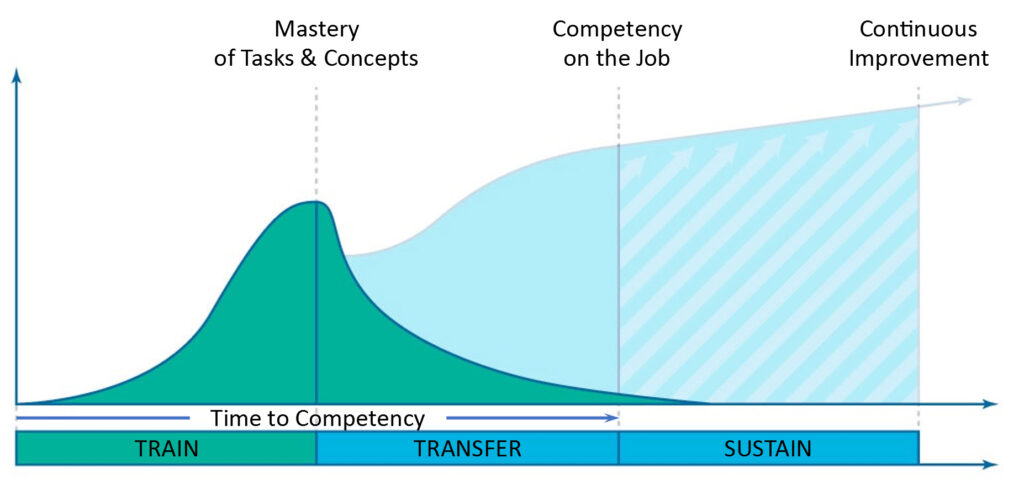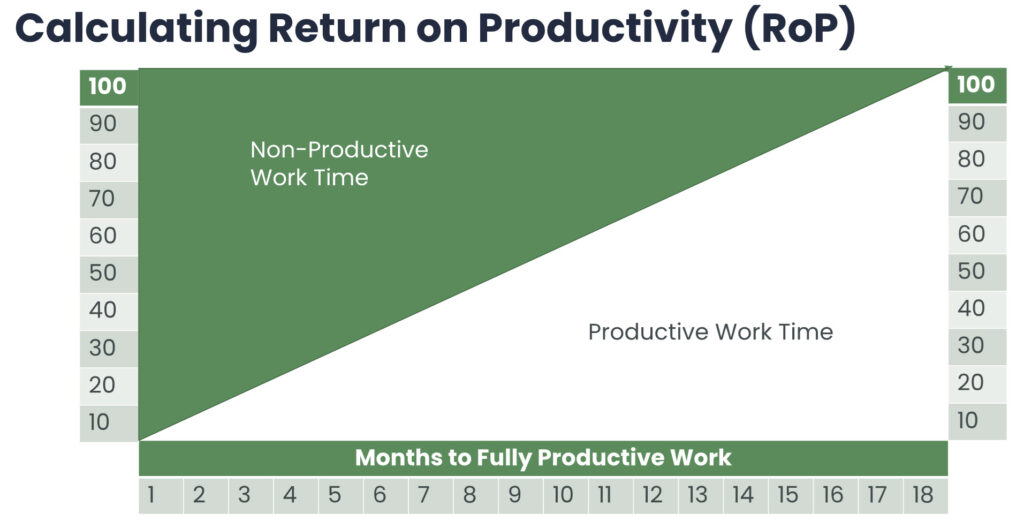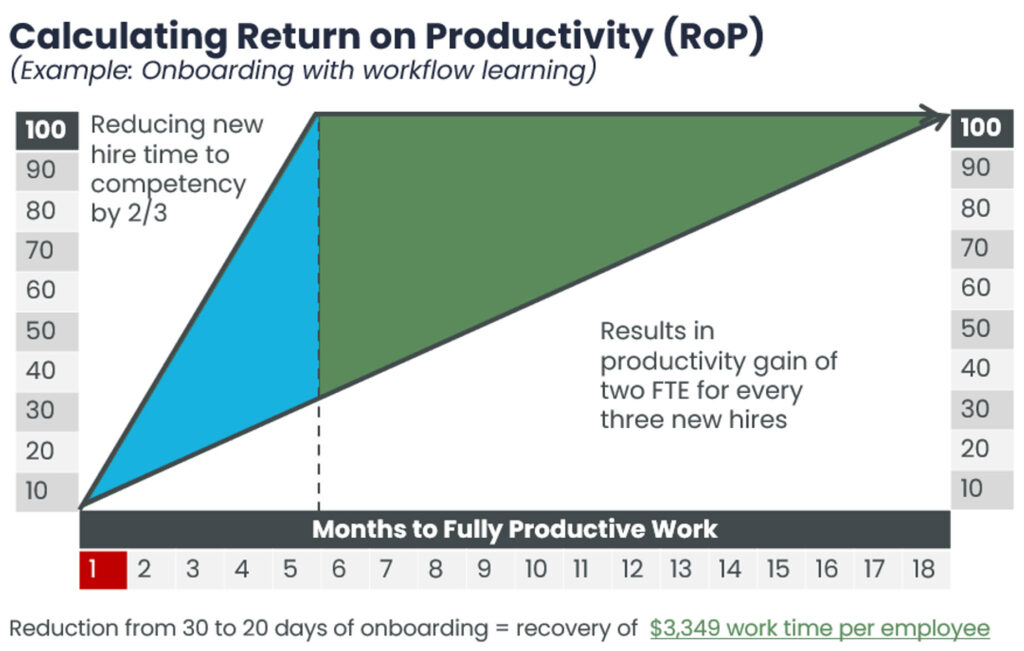In part one of this feature, Conrad Gottfredson and Sara Chizzo explore historical shifts to the present AI revolution and advise on how professionals can leverage AI to ensure the delivery of impactful, business-aligned learning strategies that drive continuous growth and agility
History has taught us that advancements in technology can permanently disrupt and even eliminate jobs. Consider the now extinct work for human computers, who were hired to complete complex mathematical calculations by hand, and switchboard operators, who physically connected phone calls by inserting phone plugs into jacks.
If this training is your primary focus, your solutions are inherently ineffective and wasteful
Today, we don’t need to look very hard to see how the Covid-19 pandemic has changed workplaces and jobs, which brings us to the transformational juggernaut of AI and its impact on all of us in the vital profession of organisational learning. Is AI going to change the nature of our work? Absolutely! Is AI going to replace us? Well, that depends on whether we deliver the strategic value every organisation needs from us. Let us explain.
Companies invest in learning for a purpose. That purpose is to deliver measurable business impact in a way that justifies the financial investment in the work we do for them. Speaking collectively, not individually, we can’t see the forest for the trees. Too many in our profession are so enamoured by the mechanics of our work (i.e., how we do what we do) that they fail to clearly articulate and deliver on what the business needs.
The first step in securing our value to the organisations we serve is to clearly understand what that impact should be. In our pursuit of how best to leverage AI’s capabilities, we must proceed with the following five areas of business impact guiding the decisions we make:
- Enable and sustain effective job performance
- Amplify the productivity of new hires
- Accelerate ongoing growth
- Adapt at the speed of change
- Reduce operational risk
The following describes each of these areas of business impact and offers guidance for assessing your current capacity to fully deliver on them. In addition, we share real-world examples of organisations that have already successfully delivered on these impacts are provided.
Impact need: enable and sustain effective job performance
This is the fundamental reason any business invests in training. But here’s the sad truth: traditional approaches to training are ineffective and wasteful in accomplishing this goal. Here’s why.
There are three stages in the journey of gaining and sustaining effective job performance: train, transfer and sustain.
Train, Transfer, and Sustain—from Learning to Effective Performance and Continuous Improvement
Traditional training approaches focus almost exclusively on the first phase of “Train.” If this phase is your primary focus, your solutions are inherently ineffective and wasteful. They leave learners with little to no intentional support as they navigate through all the challenges of the “Transfer” phase and as they apply and adapt during the “Sustain” phase. This isn’t the fault of formal training. Without intentionally orchestrated support for the Transfer and Sustain phases, learners rapidly forget what they learn and end up wasting precious worktime in their efforts to remember and figure out how to do their work, improve their performance, solve problems, and recover from mistakes they make along the way.
Quick-check your current capacity to deliver impact
Here are two questions to check your capacity to enable and sustain effective job performance:
- When you meet with key stakeholders, are your sights set squarely on enabling and sustaining effective job performance in the workflow rather than developing training solutions?
- Do you focus your design and development efforts first on the Sustain and Transfer phases ahead of the Train phase?
Think about your organization’s current mindset. After learners go through training, if they can’t rapidly transfer what they learned to effective performance on the job, then the value of that investment in training is at least inefficient and at most ineffective. Leaving learners to their own efforts during the Sustain phase will limit long-term measurable business impact.
Real-world example of success:
We worked with a quick-service industry client in high-growth mode whose new employees spent approximately 84 hours in upfront training. When released into the stores, they struggled to recall important elements of that training to apply on the job or resolve challenges faced while working in these new roles—because they lacked support during the Transfer and Sustain phases. Turnover was untenable and the disruption to productivity for managers and coaches to support these new employees was significant.
We were able to show the client that by bringing performance support into the stores they could achieve more effective performance on the job with a 50% reduction in work stoppage costs. The result is that within the 300 planned new stores to be opened that year, the organisation could save $76K US per store or $22M US across all 300 stores by implementing performance-oriented learning.
The additional benefit of applying this solution to the 1,100 existing stores, based on similar data, was $41K US per store or $45M US across all 1,100 stores. An expected $67M US economic benefit to retooling training around workflow learning was enough to get the attention of the Chief Financial Officer (CFO) and Chief Operations Officer (COO) and start this organisation on a new performance learning journey. This analysis didn’t even take into consideration the benefits to customer satisfaction, customer retention, and sales that come along with having well trained and retained retail employees, which result in a huge competitive advantage for any quick-service company.
Impact need: amplify the productivity of new hires
How much time does it take for new hires in your organisation to become fully productive in their work? The sum-total cost of non-productive work by new hires can be staggering. The example in below shows the time it was taking new hires in one of our client organisations to reach full productivity: on average, 18 months.
Unfortunately, those new hires were leaving the company between 18 and 24 months. While the percentage of non-productive work can vary from month to month, what’s significant here is the cost to the organisation of non-productive work across those 18 months and the loss of that investment when employees left the company shortly after.
Time to Achieve Full Productivity – Example from Onboarding Program of Global Consulting Firm
It is irresponsible to ignore what it costs to bring new hires to full productivity. Consider how costly this can be to your organisation.
Quick-check your current capacity to deliver impact
Here are two questions to check your capacity to amplify the productivity of new hires:
- To what degree are you intentionally focusing on reducing the time required by new hires to become fully productive in their work? If you want to remain relevant in the wake of transformational changes resulting from AI, begin by dramatically decreasing the time it takes new hires to become fully productive in their jobs. You can do this in a measurable way.
- To what degree are your training courses aligned with how learners actually perform their jobs? Amplifying the productivity of new hires requires training that can be readily applied, where learners experience immediate application to their jobs. This requires clear and unmistakable alignment of everything they learn with their specific workflow.
We know from cognitive research that the way learners encode what they learn into their memory impacts how efficiently they can retrieve and apply it to their jobs. To illustrate this, try reciting the letters of the alphabet backwards by every third letter. If you’re like most people, that’s a tough assignment because you are attempting to retrieve information from memory in a way that is different from how you encoded it. Learners face the same challenge when they participate in training that doesn’t align to how they will perform their jobs. When they attempt to transfer what they learned (encoded into memory) to their actual work, it’s like asking them to recite the letters of the alphabet in a way that’s different from how they learned it.
Real-world example of success:
We worked with a client who faced the challenge of upskilling new employees to a critical role in the support organisation for client facing executives. These employees were distributed globally. As mentioned above, the time it took for a new hire to become fully competent in that role was 18 months and the average employee didn’t stay in the role much longer than that.
They set a goal to reduce time to competency by 50% within the first year while still meeting and exceeding quality and productivity standards. By implementing a blended learning and job performance support solution aligned to the new hires’ workflow, the client was able to reduce upfront formal training by more than 50%. The performance support resources were introduced and used during training as part of the employees’ support infrastructure.
This had a huge initial impact because once they were back on the job, the employees required less support and oversight from their managers. Overall, the client was able to reduce the time to competency by 50%, from 18 months to 9 months in the first year, and from 9 months to 5 months by the second year! Given that employees were more productive more quickly and were better equipped to handle decision making independently, employee retention improved. Quality and productivity standards also improved with employees being able to handle larger volumes of work. Overall, the program was a huge success, allowing the company to realize business benefits in multiple outcome areas.
Below shows the impact this approach had in amplifying the productivity of new hires.
Productivity Gains with a Blended Learning and Job Performance Support Solution
Impact need: accelerate on-going growth
An engaged workforce delivers results with energy, passion, and purpose. Employees stay longer, innovate faster, and execute better. We also know from long-standing research that a fundamental key to an engaged workforce is their level of self-efficacy (i.e., belief in their ability to be successful).
The level of confidence that fuels sustained employee engagement primarily occurs when learners successfully perform on the job (Apply), recover quickly when things go wrong (Solve), and rapidly adapt (to Change). When learners step away from formal learning, their engagement is fuelled by the speed and ease with which they can successfully meet these three learning moments in the flow of their work:
- Apply – when acting upon what has been learned
- Solve – when solving a problem or resolving an issue because things don’t work the way they should
- Change – when learning new ways of doing something, which requires changing/adapting deeply ingrained practices
Performance support pioneer Gloria Gery first sorted out how to accelerate ongoing growth. In her book Electronic Performance Support Systems, she called for the development of a “set of technology enabled services” that would provide “on-demand access” to “guidance, advice, assistance, training, and tools” at the job-task level, “orchestrated” to intentionally “enable high-level job performance with a minimum of support from other people.”

Today, any time these capabilities are orchestrated in a way that does this, regardless of the technology used to do so, we call it a Digital Coach. When it comes to accelerating ongoing effective job performance, a Digital Coach is the game changer.
Accelerating work performance requires intentional support of learning—while working. This “workflow learning” support is only made possible through a Digital Coach. The smarter the Digital Coach, the better. This is a prime opportunity for AI to help you unleash employee engagement by continuously developing expertise through effective job performance in the flow of work.
Quick-check your current capacity to deliver impact
Here are three questions to check your capacity to accelerate ongoing growth:
- To what extent is providing Digital Coach capabilities a high-priority focus of your solution development efforts? Accelerating ongoing growth requires Digital Coach capability that can be immediately accessed by workers from within their workflow.
- Do your Digital Coach capabilities provide 2-click/10-second access to moment-of-need-support at the job-task level? Although a Digital Coach requires technology, its effectiveness is determined by its design. It must be aligned with the workflow at the job-task level.
- Does your Digital Coach provide consistently structured levels of support for every job task? Moment-of-need support requires intuitive access to all the supporting knowledge for each task, and all relevant reference resources employees need to access to successfully perform each task, while working. When this is done properly, employees have the support they need to develop ongoing expertise by learning experientially while working.
Real-world example of success:
We worked with a client who needed to support auditors conducting evaluations in the field. Previously these employees were trained via a multi-day, face-to-face course with limited follow-up support. When employees came to the moment of application on the job of what they should have learned in training, they struggled to recall key elements of that training. Additionally, this highly technical and fluid audit process could be unique from client to client, making it difficult for auditors to solve challenges as they came up. The organisation wanted to better support its employees to be more effective and efficient as they conducted audits. They also recognised a need to increase their overall confidence in their ability to do so—a key measure of both productivity and retention.
They retooled the program around a Digital Coach, which was made available to employees during formal training as well as back on the job. Within two years and with hundreds of auditors using the Digital Coach while working, 86% of those who accessed the Digital Coach were able to quickly get what they needed and get back to work. At the same time, confidence in effectively completing key processes improved from 66% to 85% and confidence in effectively completing key tasks improved from 78% to 86%. This client also saw improvements in throughput, quality of audits, and overall satisfaction. The economic savings to the organisation were profound and are the basis for its continued investment in workflow learning solutions.
Remaining relevant in the transformational juggernaut of AI – coming up
The transformative impact of AI on organisational learning emphasises the importance of adapting to change to ensure job relevance and deliver strategic value from L&D. It’s necessary for learning professionals to focus on creating measurable business impacts through training that goes beyond traditional methods.

By concentrating on enabling effective job performance, enhancing new hire productivity, accelerating growth, adapting to change, and reducing operational risk, organisations can leverage AI to significantly improve workforce performance and efficiency.
Conrad Gottfredson is Co-founder and Chief Learning Strategist at APPLY Synergies
Sara Chizzo is Executive Director, Sales at APPLY Synergies







